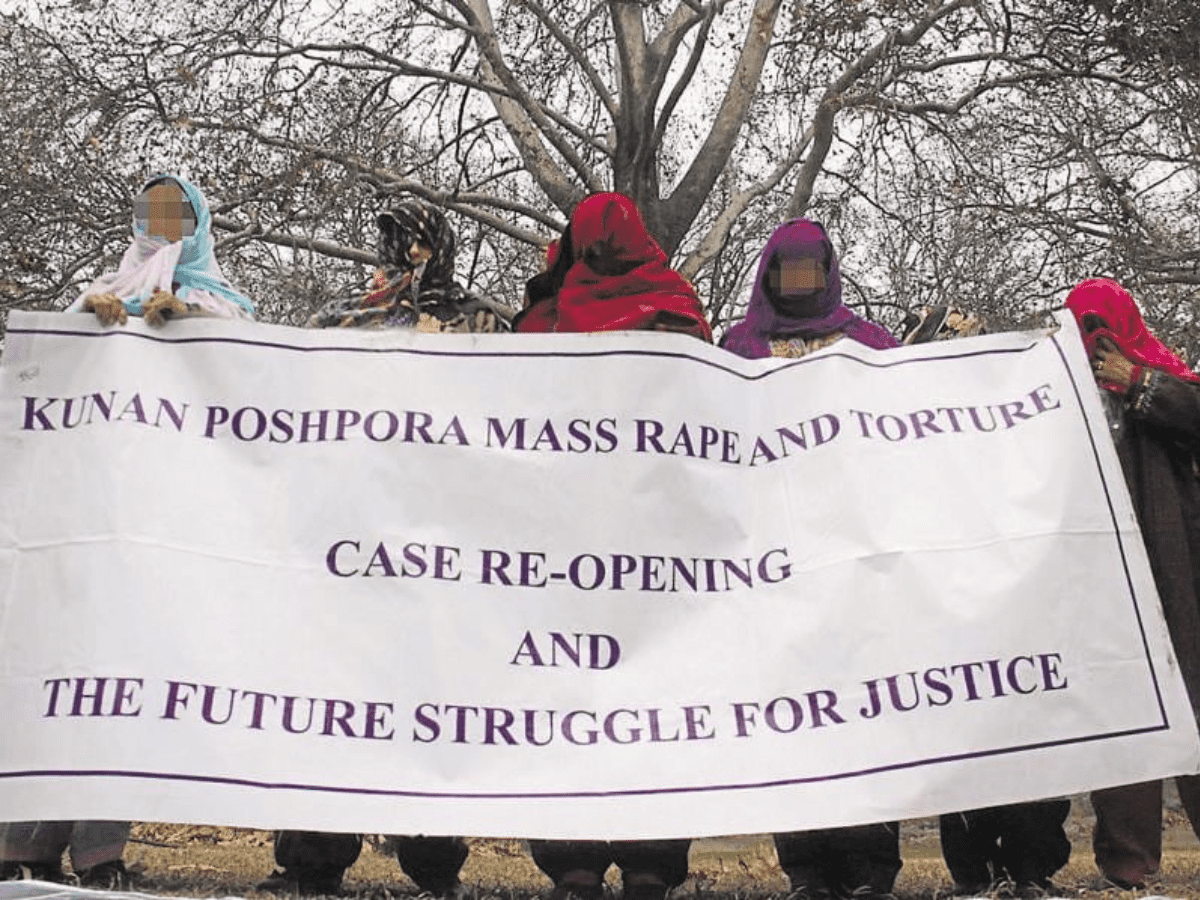
It was the night of February 23, 1991, when Indian Army soldiers conducted anti-insurgency searches in two sleepy twin villages – Kunan and Poshpora – in the Kupwara district of Jammu and Kashmir. They forced the men out of their homes, confined them to a faraway place, and then proceeded to mass rape over 50 women – young and old.
What happened 32 years back
Under the guise of a search and cordon operation, soldiers of the 4th Rajputana Rifles of the 68th Brigade barged into the villagers’ homes and dragged the men to interrogation centers where they were allegedly tortured, beaten, and electrocuted throughout the night.
While the women were allegedly raped, beaten, and abused in their houses.
According to a TRT video that talks about the distressing experience, the youngest victim was 13 years old while the oldest victim was 80 years.
After two days
Two days after the horror night, the lamberdar (zamindar) of Kunan village and one of the key witnesses Abdul Aziz Shah reported the incident to the then Kupwara district magistrate S M Yasin.
Yasin visited the village to investigate and note down the testimonies of 23 alleged victims. He later mentioned that many unmarried rape victims did not come forward fearing they would not find a suitable groom in the future.
In his report sent to the then divisional commissioner of Kashmir, Wajahat Habibullah, he mentioned that the Army men “behaved like beasts” and that he feels “ashamed to put in black and white the kind of atrocities and their magnitude that were brought to my notice”. Within 15 days of the filing of the report, he was transferred to the Muslim Auqaf Trust as a special officer.
Habibullah visited the villages and said the alleged mass rape is highly doubtful and exaggerated.
In his confidential report submitted to the government, Habibullah stated, “If in each case rape was committed by five to 15 persons as alleged, there would have to have been at least 300 men in the village doing nothing but this! In fact, the number of men was 150. It is impossible to believe that officers of a force such as the Indian Army would lead their men into a village with the sole aim of violating its women. Even if it were possible to concede this and the Army was indeed such a brutal force, it would then be impossible to explain why the officers themselves did not participate in such an orgy.”
However, speaking to the Sunday Express, Habibullah claimed that the government deleted portions of his report. “The paragraphs of my confidential report where I had recommended that the level of investigation be upgraded to that of a gazetted police officer so that this case is probed efficiently were taken out of my report. I had also asked that the Corps Commander should issue orders to ensure that the Army cooperates with the investigation because SP Kupwara had indicated that in other cases, he was not getting the required cooperation for investigation from the Army. That paragraph was also deleted,” Habibullah said.
Government’s clean chit to Indian Army
On March 8 an FIR was lodged at the Trehgam police station. The then SP of Kupwara Dilbagh Singh formed a Special Investigation Team to probe the case.
Pressure was mounting on the government to act. Subsequently, the Press Council of India appointed a committee headed by veteran journalist B G Verghese to report.
Verghese along with his team interviewed the alleged rape victims. This time, 40 women came forward to narrate their ordeal.
However, Verghese’s report did not match either Yasin’s or Habibullah’s reports. His report stated that the allegations were ‘a hoax orchestrated by militant groups and their sympathizers to defame the Indian Army.’
“Why was the incident not reported for “ten days”, since the village was “not that remote”, and if it was a question of shame, how was it that the same women talked about it “tirelessly” later on?” the report stated.
The committee felt that the “delayed medical examination” proved nothing; there was no medical report but only “women’s say so”, and a “torn hymen”, as in the case of three unmarried women, could be a result of “natural factors, injury, pre-marital sex or rape”.
Kupwara SP Dilbagh Singh was transferred. On September 23, with Verghese’s report, the case was termed ‘unfit’ for criminal prosecution and subsequently closed.
PIL filed in 2013
In October 2011, rape victims from the villages approached the Jammu and Kashmir State Human Rights Commission (SHRC) to re-open the case. In 2013, around 50 women, under the banner of Support Group for Justice for Kunan Poshpora, filed a PIL (Public Interest Litigation) before the J&K High Court seeking implementation of the SHRC recommendations.
Although the J&K police reasons why the case should remain closed, the Kupwara magistrate dismissed it and directed further investigations.
The case was shifted to the J&K high court which ordered the state government to compensate the victims. The state government then filed a petition in the Supreme Court challenging the HC’s order.
On March 10, 2015, the Supreme Court stayed the proceedings and 23 years later the Kunan Poshpora case remains unresolved.



